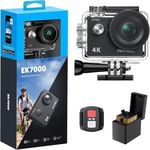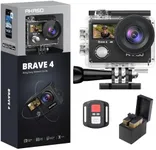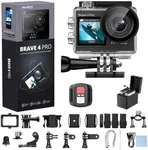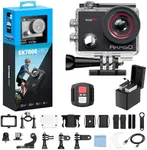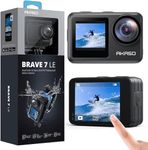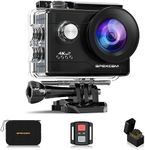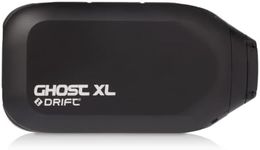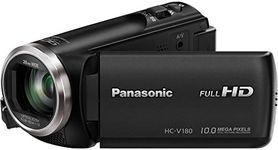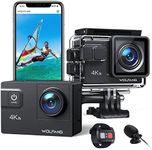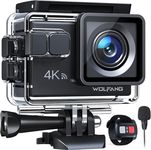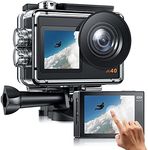Buying Guide for the Best Camcorders For Sports
Choosing a camcorder for sports is all about capturing fast action clearly and smoothly. Sports often involve quick movements, unpredictable lighting, and the need to zoom in on distant subjects. When picking a camcorder, you want to focus on features that help you record sharp, stable, and detailed videos, even when things are moving quickly. Understanding the key specifications will help you find a camcorder that matches your needs, whether you're filming a soccer game, a track meet, or a skateboarding session.Frame RateFrame rate refers to how many individual images (frames) the camcorder captures per second, usually measured in frames per second (fps). This is important for sports because higher frame rates make fast movements look smoother and allow you to create slow-motion videos without choppiness. Common frame rates are 30fps, 60fps, and sometimes 120fps or higher. For most sports, 60fps is a good starting point, as it balances smoothness and file size. If you want to do a lot of slow-motion playback, look for camcorders that can shoot at 120fps or more. If you’re mostly recording slower-paced activities, 30fps may be enough.
Autofocus Speed and AccuracyAutofocus is the camcorder’s ability to keep your subject sharp and clear as it moves. In sports, subjects move quickly and unpredictably, so fast and accurate autofocus is crucial. Some camcorders have basic autofocus that works well for stationary subjects, while others have advanced tracking systems that can follow moving players or objects. If you’re filming fast-paced sports, look for camcorders with continuous or tracking autofocus features. If your subjects are mostly still, autofocus speed is less critical.
Optical ZoomOptical zoom lets you get closer to the action without losing image quality, unlike digital zoom, which can make videos look grainy. This is important for sports because you might be far from the field or court. Optical zoom is measured in how many times closer you can get, like 10x, 20x, or 30x. For large fields or outdoor sports, a higher optical zoom (20x or more) is helpful. For indoor or close-up sports, a lower zoom range may be enough.
Image StabilizationImage stabilization helps reduce blurriness and shakiness in your videos, especially when you’re moving or zoomed in. This is important for sports because you might be following fast action by hand, and even small shakes can make footage hard to watch. There are different types, like optical and digital stabilization. Optical is generally better for video quality. If you plan to shoot handheld or move around a lot, strong image stabilization is a must. If you’ll always use a tripod, it’s less important.
Low Light PerformanceLow light performance describes how well the camcorder records in dim conditions, like evening games or indoor arenas. Good low light performance means your videos will be clearer and less grainy when lighting isn’t perfect. This is affected by the size of the camcorder’s sensor and the lens’s maximum aperture (how much light it lets in). If you often film in poorly lit environments, look for camcorders with larger sensors and wider apertures. If you mostly shoot outdoors in daylight, this is less critical.
Recording ResolutionRecording resolution is the amount of detail the camcorder can capture, usually measured in pixels like Full HD (1080p) or 4K. Higher resolution means sharper, more detailed videos, which is great for capturing fast action and small details. 4K is becoming more common and is useful if you want to crop or zoom in during editing. If you only plan to watch videos on a standard TV or share online, 1080p may be enough. If you want the best quality or plan to edit your footage, 4K is a good choice.
Battery LifeBattery life is how long the camcorder can record before needing a recharge. Sports events can last a long time, so you don’t want your camcorder dying in the middle of the action. Some camcorders have removable batteries, so you can carry spares. If you film long games or tournaments, look for models with longer battery life or the option to swap batteries. For short events, battery life is less of a concern.
